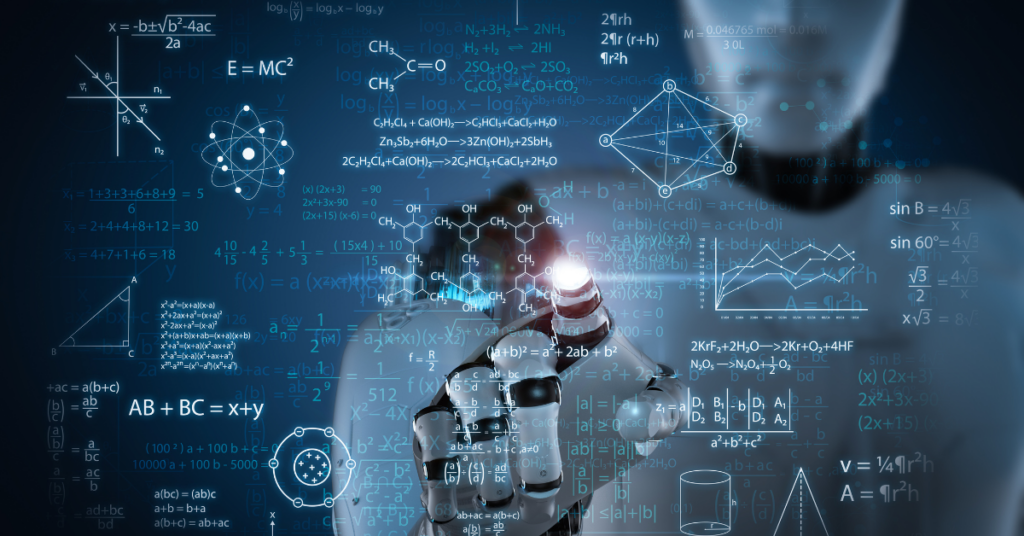blog / Technology
Top 30 Technology Jargon You Should Know About

In today’s digital world, technology has woven itself into the fabric of our daily lives, impacting how we communicate, work, and live. As we navigate this digital landscape, we often encounter various technical jargon that can seem confusing initially. In this article, we will explain 30 common technology jargon terms, demystifying their meanings and helping you become more tech-savvy in the process.
Top 30 Technology Jargon With Meaning
1. A/B Testing
A/B testing, also known as split testing, is a method employed to evaluate the effectiveness of two distinct versions of digital content, such as applications and web pages.
2. Artificial Intelligence (AI)
AI refers to the simulation of human intelligence in computers and systems. Additionally, it enables machines to perform tasks that typically require human intelligence, like learning from data, recognizing patterns, making decisions, and solving complex problems.
ALSO READ: Make Way for AI: Top 10 Applications That are Reshaping Industries
3. Alt Text
Alternative text, commonly known as alt text, is also technology jargon. It simply means the descriptive text incorporated into an image to convey its visual content to individuals who may not be able to see the image.
4. Application Programming Interface (API)
API is a fundamental concept in computer programming. It encompasses a set of pre-defined rules and protocols that empower software applications to interact and collaborate seamlessly.
5. Augmented Reality (AR)
AR involves superimposing digital content like images or text onto the real world. Furthermore, this is commonly achieved through smartphone cameras or wearable devices.
6. Back-End
 The back-end is the server-side of a website that operates behind the scenes to ensure its functionality. Also, back-end encompasses servers, databases, and applications collaborating to facilitate the proper functioning of webpages or software.
The back-end is the server-side of a website that operates behind the scenes to ensure its functionality. Also, back-end encompasses servers, databases, and applications collaborating to facilitate the proper functioning of webpages or software.
ALSO READ: What is Full-Stack Development & Why It’s a Lucrative Career
7. Blockchain
A blockchain is a decentralized digital ledger that records activities and transactions. Whenever an event occurs within the blockchain, it generates a fixed and unalterable record.
8. Big Data
Big data refers to vast and rapidly expanding datasets. These datasets are crucial in extracting insights, facilitating informed decision-making, and uncovering patterns that drive innovation across various industries.
9. Cookies
Cookies are small files that web servers automatically send to your personal devices while you browse specific websites. Additionally, these files contain identifying details such as your information, login IDs, passwords, and records of your site visits.
10. CSS
Cascading Style Sheets (CSS) is a programming language used to infuse visual style into HTML documents. Additionally, it plays a crucial role in crafting visually appealing user experiences by shaping page design elements such as typography, colors, and more.
11. Cloud Computing
Cloud computing is a transformative approach where data storage and processing shift from local devices, such as computers and hard disks, to remote servers accessible online.
ALSO READ: What is Cloud Computing? How Does it Help a Business Grow?
12. Data Mining
Data mining is the process of exploring and analyzing large sets of data to discover meaningful patterns, trends, and relationships. Additionally, it enables businesses to make informed decisions by uncovering hidden insights within complex data sets.
13. Database
Database is another fundamental technology jargon that you should be acquainted with. Simply put, it is a structured data collection organized for easy storage, retrieval, and management.
14. DoS/DDoS Attack
A Denial-of-Service (DoS) or Distributed Denial-of-Service (DDoS) attempts to make a website, network, or service inaccessible by overwhelming it with excessive traffic or requests.
15. Deep Learning
Deep learning is a specialized domain within machine learning that employs neural networks to analyze intricate patterns within extensive datasets.
ALSO READ: Deep Learning vs Machine Learning: The Ultimate Guide for 2022
16. Firewall
A firewall is a security system that safeguards computer networks from external security vulnerabilities. Furthermore, it operates as a protective barrier, monitoring both incoming and outgoing network traffic and deciding whether to allow or block the passage of network data.
17. Front-End
Front-end is also one of the key IT terms in web designing. It constitutes the user interface, further encompassing a website’s visual and interactive elements that users directly interact with.
18. HTML
HyperText Markup Language (HTML) is a fundamental technology jargon and coding language that forms the backbone of web design and content presentation. Moreover, it serves as the foundational building block for website development.
19. Impressions
Impressions are the number of times online content, such as an article or video, is viewed from its source. Whenever this content appears in a user’s timeline, it also adds to the impression count, providing a measure of the content’s visibility and exposure.
20. Interface or GUI
An interface also referred to as a GUI (Graphical User Interface), represents the visual and interactive component of software that users directly engage with.
ALSO READ: What is User Interface Design and Why is it Important?
21. IoT
The Internet of Things (IoT) is a network of interconnected physical objects or devices that are embedded with sensors, software, and connectivity. These devices can also communicate with each other and humans via the internet, enabling remote monitoring, control, and automation of diverse processes.
22. IP Address
An Internet Protocol (IP) address is a numerical label designated to individual devices linked to a computer network that uses the Internet Protocol for communication.
23. Machine Learning (ML)
 ML is a subset of AI that guides algorithms to improve their performance in specific tasks through data-driven learning. Thus, this technology finds widespread applications across various fields, including healthcare, finance, IT, and recommendation systems.
ML is a subset of AI that guides algorithms to improve their performance in specific tasks through data-driven learning. Thus, this technology finds widespread applications across various fields, including healthcare, finance, IT, and recommendation systems.
ALSO READ: A Guide to 4 Important Types of Machine Learning with Use Cases
24. Sandbox
Sandbox is a common tech industry vocabulary that every IT professional should know about. It is a secure and isolated environment in software development where new code changes and experiments can be tested without affecting the live system.
25. SaaS
Software as a Service (SaaS) encompasses software applications accessed over the internet to aid in various daily tasks and job-related activities.
26. Scrum
The technology jargon term scrum is derived from the world of rugby. It represents an agile project management framework that provides teams with a structured approach to organizing and managing their work.
ALSO READ: What Does a Scrum Master Do: Get the Skills Required for The Job
27. SEM
Search Engine Marketing (SEM) involves using paid advertising on search engines to draw user traffic to a website. Furthermore, it captures users’ attention by actively connecting them with relevant products or services and directing targeted visits to the website.
28. SEO
Search Engine Optimization, also known as SEO, enhances a website’s visibility in search results by optimizing elements such as keywords and content quality. Consequently, it significantly improves online presence and helps sites rank higher organically. Furthermore, this increases their chances of appearing at the top of relevant searches.
29. UX/UI
The technology jargon UX/UI stands for User Experience and User Interface. UX covers the complete user interaction experience with a website. Meanwhile, UI involves the visual elements and design that users directly engage with. Therefore, when combined, UX/UI design strives to achieve a smooth and delightful user experience.
ALSO READ: UX vs UI design: Which is More Important and Why?
30. Virtual Reality (VR)
Lastly, VR is a computer-generated simulation that immerses users in a digital environment, often experienced through headsets.
In conclusion, gaining familiarity with these 30 common technology jargon terms can equip you with a foundational knowledge of the ever-evolving tech landscape. Also, remember, that technology is a dynamic field, and continuous learning is essential to stay current. Therefore, if you wish to delve deeper into the realm of technology, consider exploring the comprehensive range of technology courses Emeritus offers.
By Krati Joshi
Write to us at content@emeritus.org





